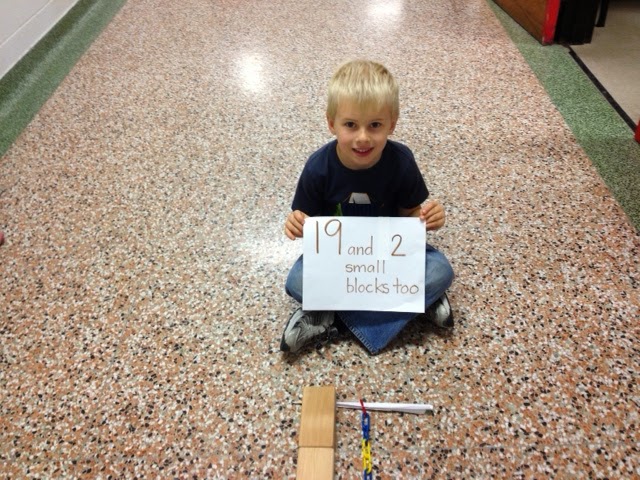Clear the Runway
It all began with a folded piece of paper and a desire to make a paper airplane. Several children created (with a little outside help) their version of the ultimate paper airplane. The hallway outside the classroom was made available to the students to test their planes. The children were beside themselves with excitement. By this time, nearly a dozen students had gotten in on the provocation. After many 'test runs,' it was time to see whose plane could fly the greatest distance. A taped line was put down on the floor for the pilots to stand behind as they launched their aircraft. One by one, the planes were tossed into the air. One plane, by far, surpassed all of the others and was declared the winner. But could the distance that the plane flew be measured? Of course! Plastic measuring links were brought out into the hallway and were put together to form a long chain from the taped line to the plane. Then came the task of counting all of those links. Mr. Pickett helped keep us on track with our counting. It was determined that it took 332 links to measure the distance of the flight. But could a comparison be made using another non-standard measuring tool? Certainly! Many students helped bring out longer unit blocks from the Block Centre. The blocks were carefully placed on the floor in a straight line with ends touching ends. Then we counted again. This time it took only 19 long blocks and 2 shorter blocks to span the flight distance. Here are some pictures of the pilot/designer and the measuring outcomes.
We compared the two non-standard units of measure.
The plane is visible in both photographs. It is attached to the red measuring link near the bottom of both pictures.



No comments:
Post a Comment
Note: only a member of this blog may post a comment.